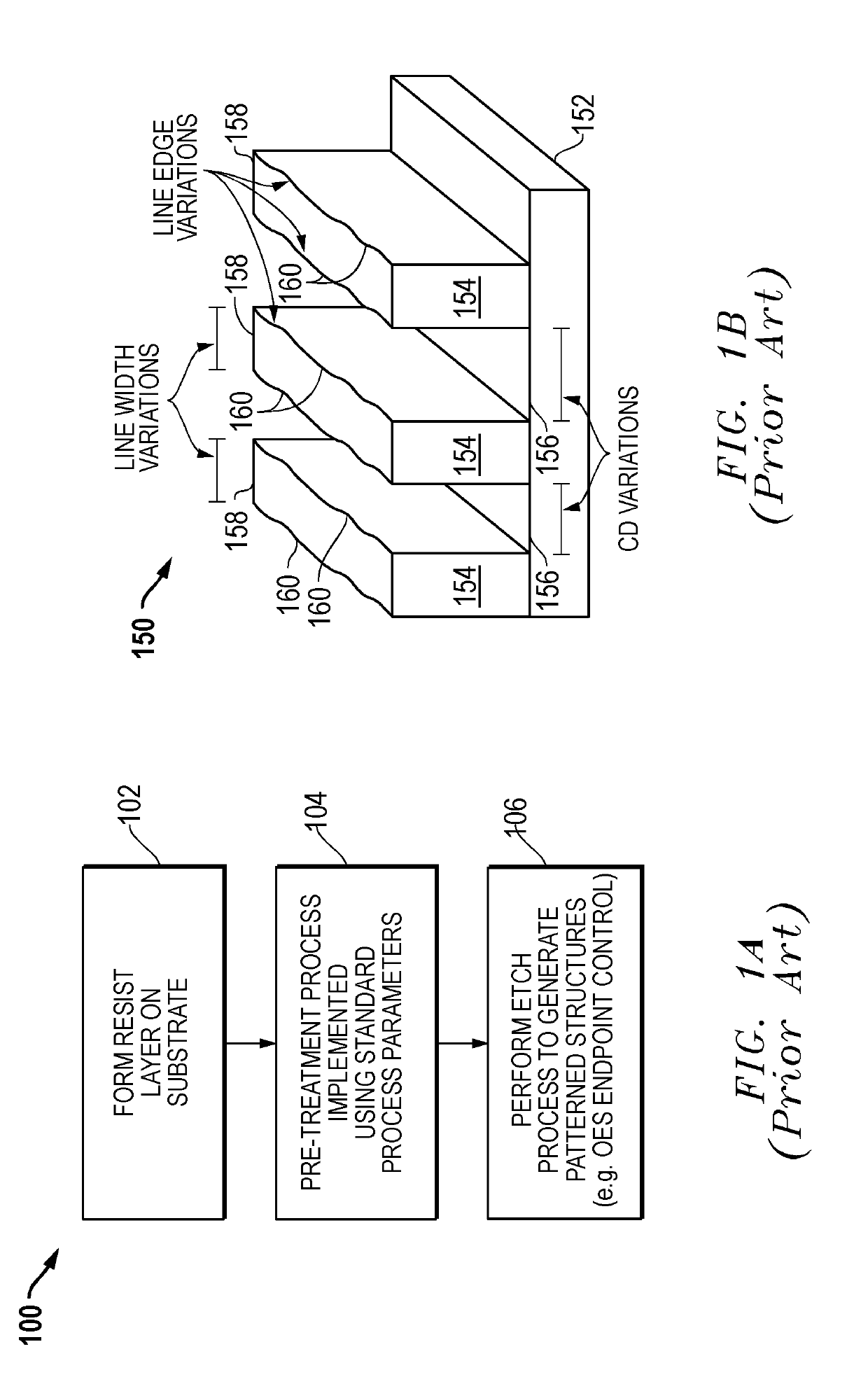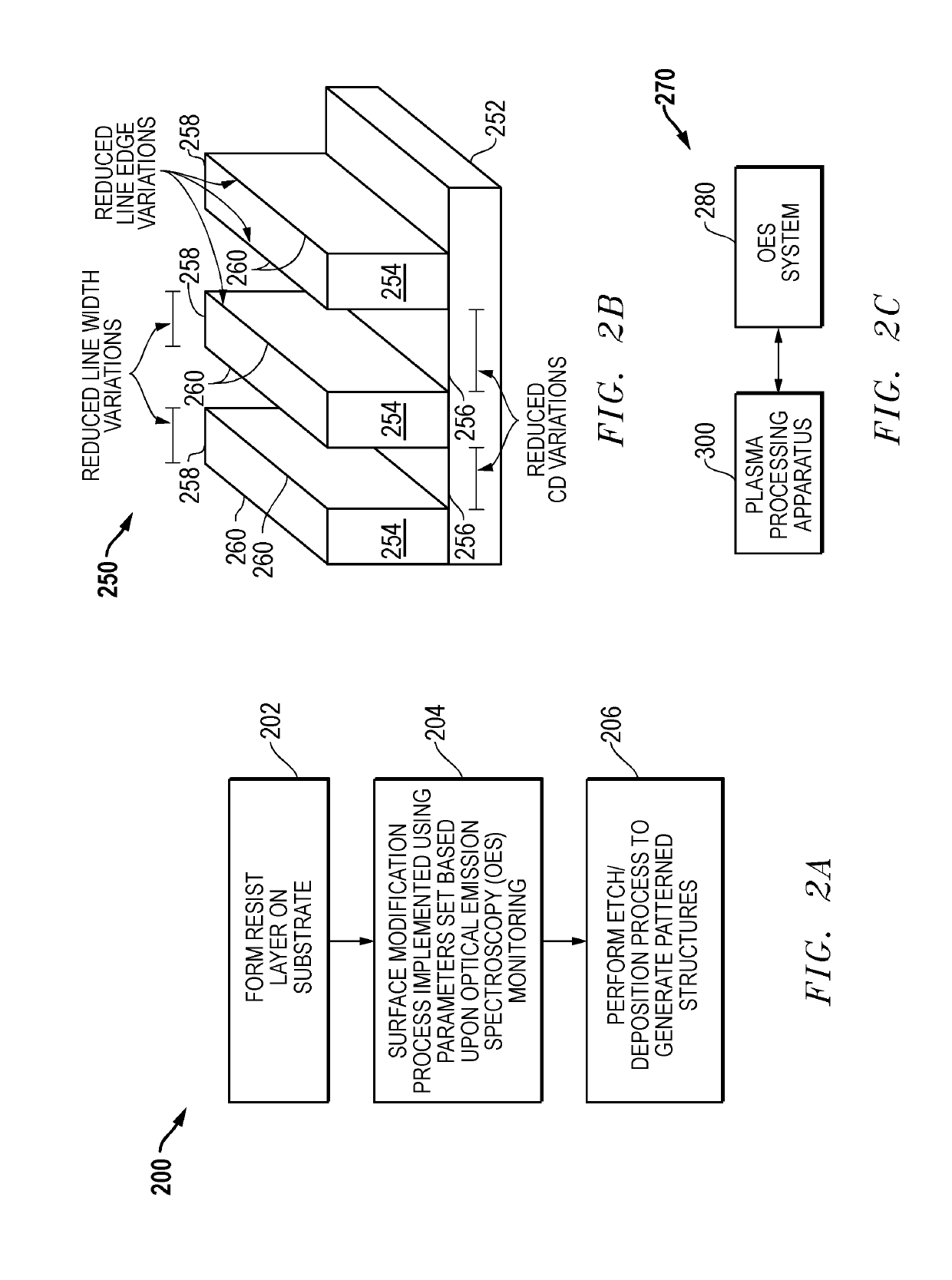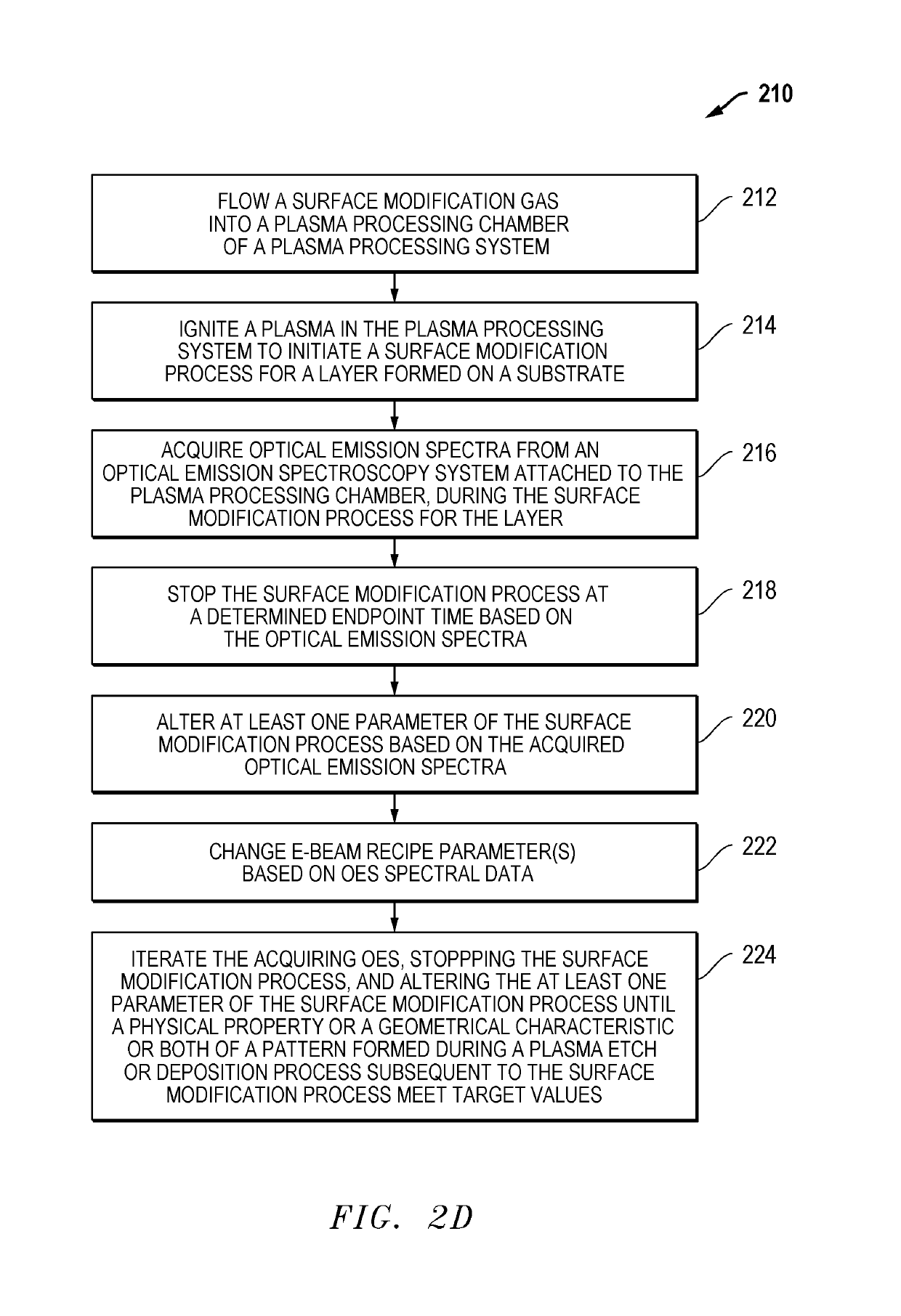Surface modification control for etch metric enhancement
a surface modification and metric technology, applied in the direction of photomechanical equipment, semiconductor/solid-state device testing/measurement, instruments, etc., can solve the problems of microelectronic device formation, line width, line edges, critical dimension (cd) of patterned features, etc., to reduce the likelihood of pattern collapse for the car
- Summary
- Abstract
- Description
- Claims
- Application Information
AI Technical Summary
Benefits of technology
Problems solved by technology
Method used
Image
Examples
Embodiment Construction
[0046]A method is disclosed for monitoring and controlling a process of plasma-assisted surface modification of a layer formed on a substrate. The method includes flowing a surface modification gas into a plasma processing chamber of a plasma processing system, igniting a plasma in the plasma processing chamber to initiate a surface modification process for a layer formed on a substrate, and acquiring optical emission spectra from an optical emission spectroscopy system attached to the plasma processing chamber, during the surface modification process for the layer. For one embodiment, the method also includes altering at least one parameter of the surface modification process based on the acquired optical emission spectra. For one embodiment, the acquired optical emission spectra can include an intensity of a spectral line, a slope of a spectral line, or both. The surface modification process could comprise a high-density electron exposure or ultraviolet light-based treatment of on...
PUM
| Property | Measurement | Unit |
|---|---|---|
| wavelength | aaaaa | aaaaa |
| wavelength | aaaaa | aaaaa |
| frequency | aaaaa | aaaaa |
Abstract
Description
Claims
Application Information
 Login to View More
Login to View More - R&D
- Intellectual Property
- Life Sciences
- Materials
- Tech Scout
- Unparalleled Data Quality
- Higher Quality Content
- 60% Fewer Hallucinations
Browse by: Latest US Patents, China's latest patents, Technical Efficacy Thesaurus, Application Domain, Technology Topic, Popular Technical Reports.
© 2025 PatSnap. All rights reserved.Legal|Privacy policy|Modern Slavery Act Transparency Statement|Sitemap|About US| Contact US: help@patsnap.com



